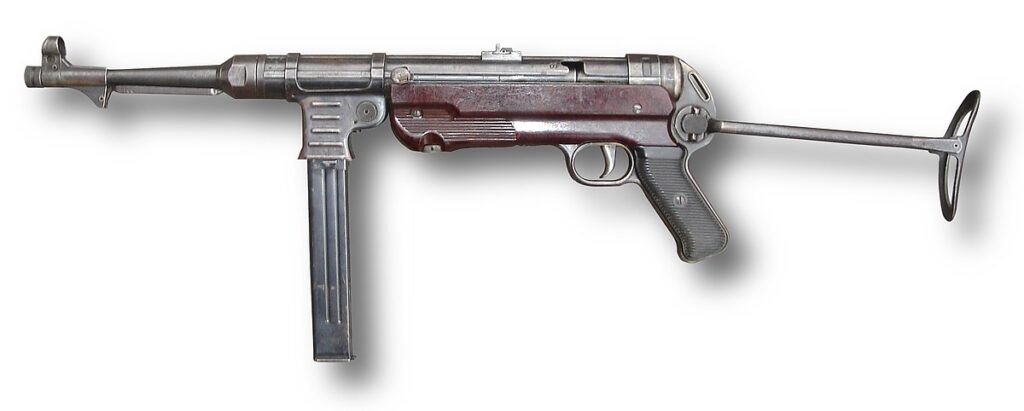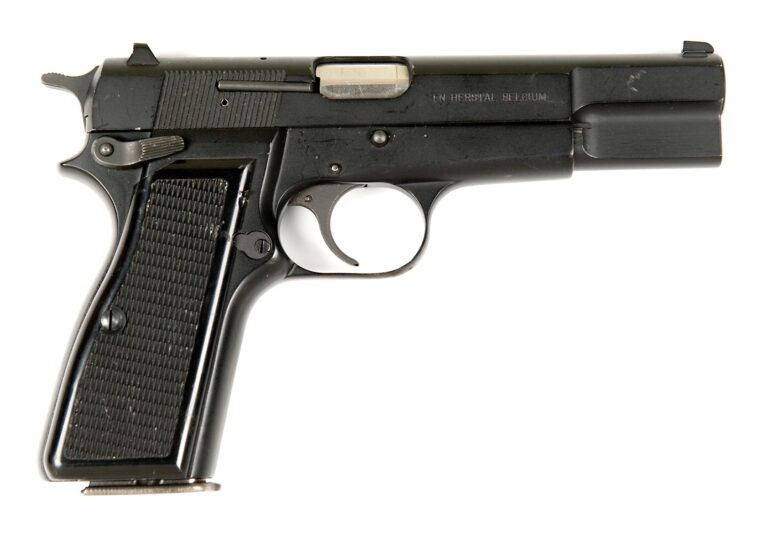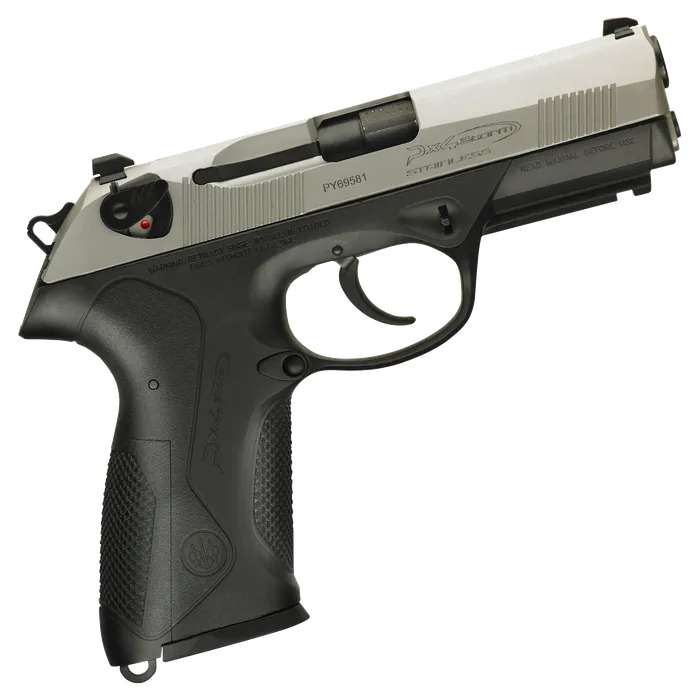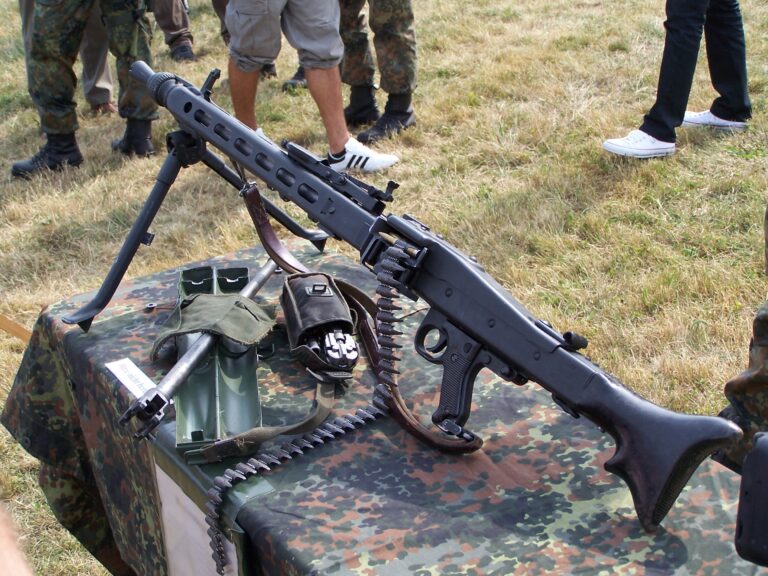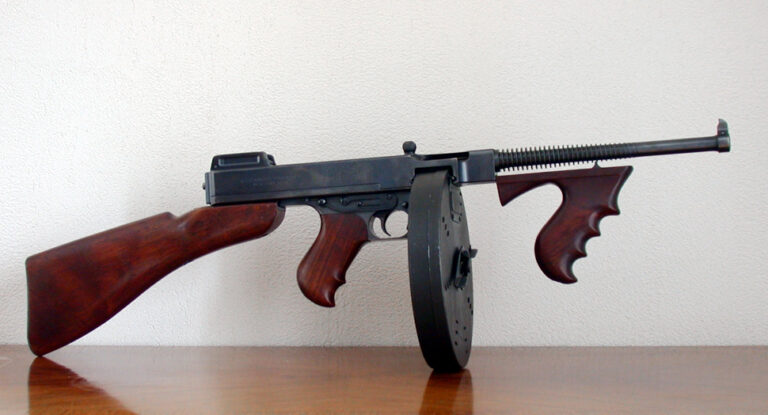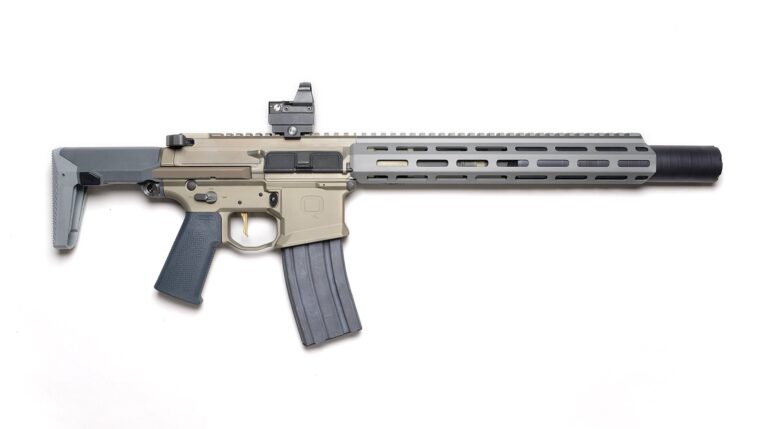Introduction
The MP40 (Maschinenpistole 40) is a German machine pistol designed to meet the tactical needs of modern warfare at the turn of the 1940s. A true icon of the Second World War, it was massively deployed in the armed forces of the Third Reich, notably in mechanized units, reconnaissance troops and parachute formations. Its distinctive silhouette, pressed steel construction and moderate rate of fire contributed to its reputation for reliability and maneuverability.
The MP40 represents a milestone in the evolution of light automatic weapons, incorporating principles of mass production, material economy and practical ergonomics right from the start. Despite certain limitations, it has become an emblematic weapon of total warfare, and an influential model for future generations of machine pistols.
Genesis and development context
During the Spanish Civil War (1936-1939), European armies became aware of the need to equip certain units with a short-range automatic weapon capable of outperforming traditional rifles in close combat. In Germany, the MP18 (used during the First World War) and its successors, including the MP38, were the first milestones in this evolution. The MP38, though effective, remains too complex and costly to produce on a large scale.
In 1939, Erfurt-based Erma Werke was commissioned to develop a simplified and modernized version of the MP38. The result was the MP40, officially adopted by the Wehrmacht in 1940. This new weapon incorporated advanced industrial production features for its time: deep-drawn steel components, use of polymers for certain parts, riveted and welded assembly, and more.
The standardization of its manufacture enabled rapid production, with over a million units produced between 1940 and 1945. The MP40 became the standard pistol for NCOs and many soldiers in motorized divisions.
Technical specifications
| Element | Detail |
|---|---|
| Model | MP40 |
| Caliber | 9×19 mm Parabellum |
| Magazine capacity | 32 shots |
| Weight (unloaded) | 3.97 kg |
| Overall length | 833 mm (with extended stock) |
| Barrel length | 251 mm |
| Firing rate | Approx. 500 to 550 cps/min |
| Firing mode | Automatic only |
| Materials | Stamped steel, polymer |
The MP40 operated with an open breech, a common firing mode for this type of weapon at the time, guaranteeing good barrel cooling but increasing the risk of dirt intrusion. It didn’t have a firing selector: each pull of the trigger triggered a burst of fire, but the short cycle made it easy to control semi-auto firing by briefly pressing the trigger.
Design, ergonomics and innovation
One of the most innovative aspects of the MP40 was its industrial rationalization. Where weapons such as the American Thompson relied on carefully machined parts and expensive materials, the MP40 favored rapid manufacturing, using mainly pressed steel– a first in the manufacture of weapons in this category. This enabled Germany to produce high volumes without mobilizing too many critical resources.
The folding metal stock, integrated into the lower tube of the case, was an ingenious solution for airborne or motorized troops, reducing the weapon’s length to around 630 mm when folded. The pistol grip was made of Bakelite, a tough, lightweight polymer for its time.
The MP40 was renowned for its shooting stability, thanks in large part to its weight and moderate rate of fire. However, it suffered from a fragile magazine: the slightest lateral pressure could cause feed malfunctions, which earned the weapon a certain caution in use.
Military use during the Second World War
The MP40 was never distributed to the entire German infantry, but rather reserved for specific categories:
Non-commissioned officers and group commanders
Mechanized and armored troops (Panzergrenadiers)
Parachutistes (Fallschirmjäger)
Reconnaissance and security units
Its effectiveness was fully demonstrated in urban combat, short-range assaults, and confrontations in enclosed environments (buildings, trenches, dense forests). It enabled German troops to increase their volume of fire at close range, far outstripping that of traditional bolt-action rifles like the Kar98k.
Despite its qualities, the Germans did not have enough MP40s to equip all soldiers on the line. The weapon was therefore always a complement, not a replacement, in the Wehrmacht’s standard equipment.
Comparison with other machine pistols of the period
| Model | Caliber | Firing rate |
|---|---|---|
| MP40 | 9×19 mm | ~500 cps/min |
| PPSh-41 | 7.62×25 mm | ~900 cps/min |
| Thompson M1 | .45 ACP | ~600-700 cps/min |
The Soviet PPSh-41 surpassed the MP40 in rate and capacity (71-shot drum magazine), but suffered from more rudimentary ergonomics. The American Thompson M1 offered notable firepower thanks to its caliber, but its heavy weight and costly manufacture limited its distribution.
The MP40, with its rational industrial design, was positioned between the two extremes: less efficient than PPSh in saturation firing, but more economical and practical than Thompson.
Post-war and historical impact
After 1945, many MP40s were recovered by Allied armies or distributed to armed groups in areas of Western influence. It can be found in :
The wars of decolonization (Indochina, Algeria)
African and Balkan conflicts
The Greek Civil War
The weapon remained in circulation for several decades, often used in paramilitary contexts or by resistance groups.
Today, the MP40 has become a highly sought-after collector’s item, especially in its original versions. It also features prominently in war films, historical video games and military re-enactments.
Conclusion
The MP40 represents a technological milestone in the manufacture of automatic weapons. Designed to meet the demands of the Blitzkrieg, it embodies the German desire to combine tactical efficiency with industrial rationalization. Although replaced in the post-war period by more modern, modular models, it retains a prominent place in military history as a symbol of an era and an essential benchmark for twentieth-century machine pistols.

